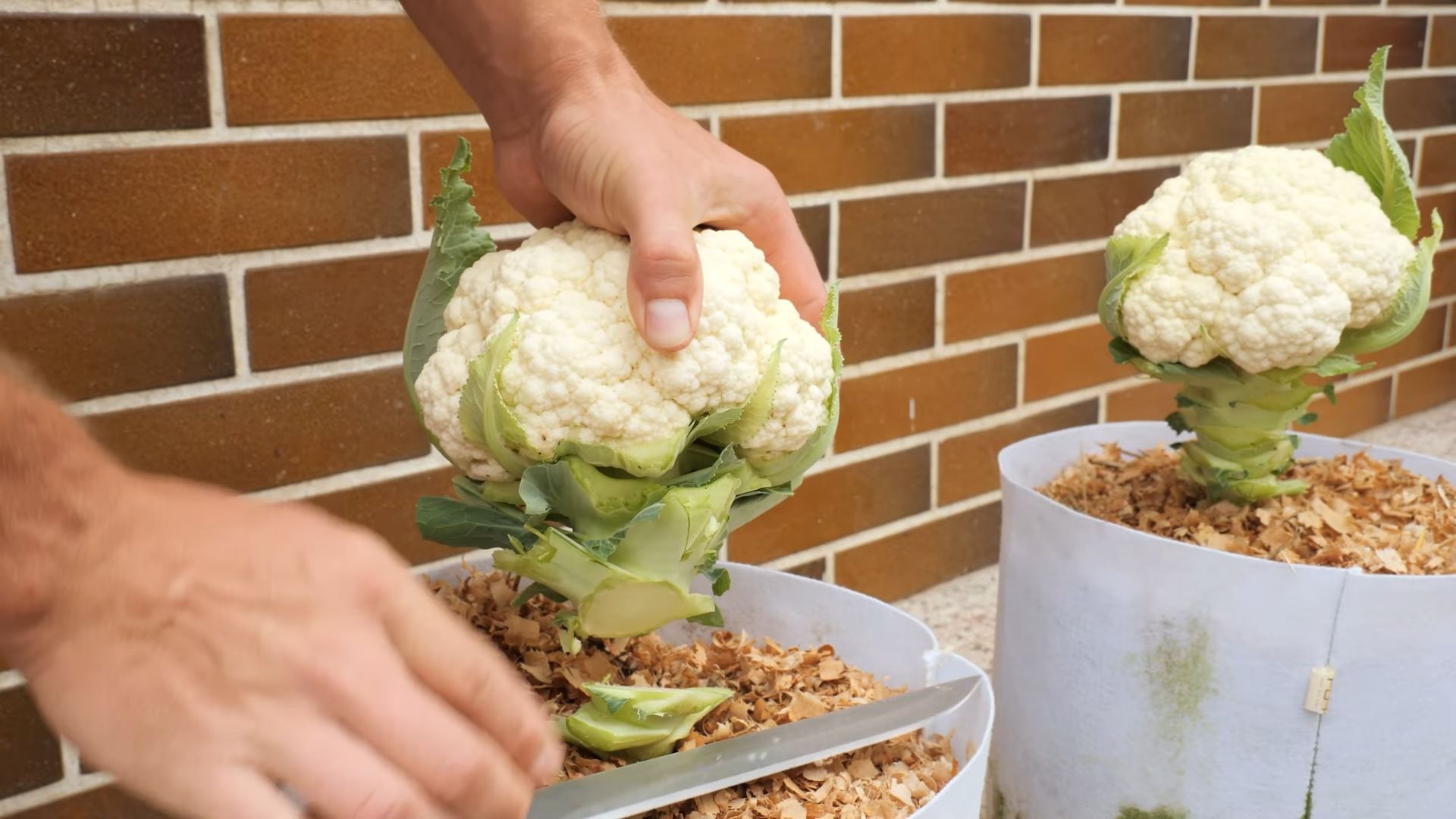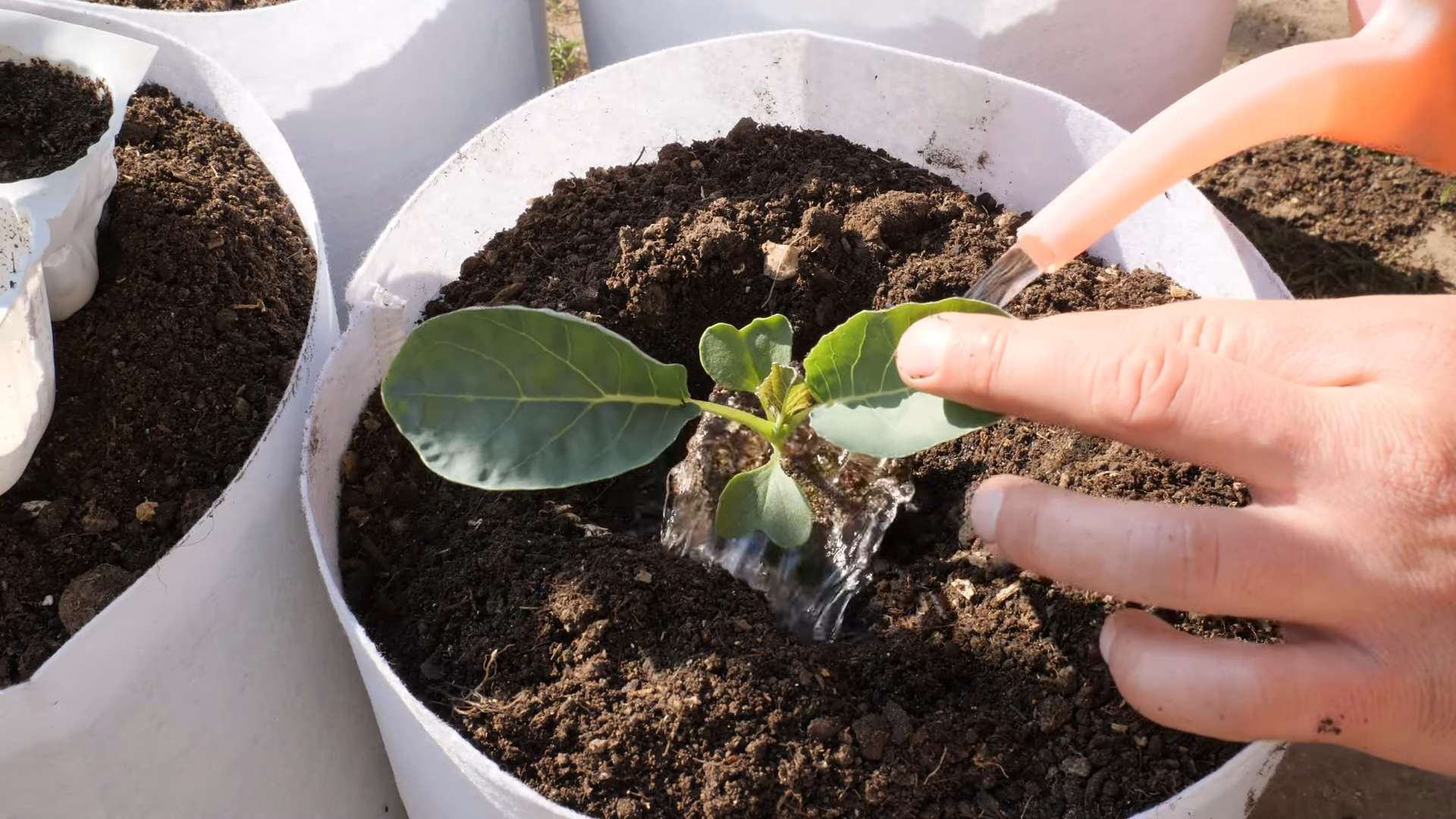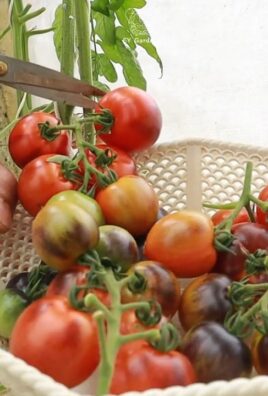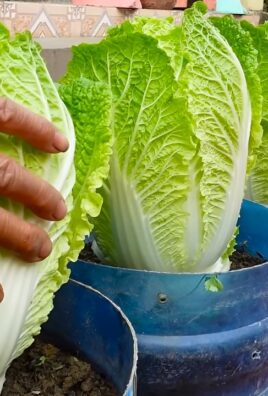Grow Cauliflower Backyard: Your Guide to a Bountiful Harvest
Growing cauliflower in your backyard might seem daunting, but I’m here to tell you it’s easier than you think! This article is your ultimate guide to Grow Cauliflower Backyard success, packed with simple DIY tricks and hacks that will transform your gardening experience. Forget expensive grocery store produce – let’s unlock the secrets to cultivating your own delicious, homegrown cauliflower.
For centuries, cauliflower has held a place of honor in gardens across the globe. From ancient Roman times, where it was considered a delicacy, to its modern-day popularity, this versatile vegetable has captivated cooks and gardeners alike. Its creamy texture and subtle flavor make it a kitchen staple, but the true joy lies in harvesting your own perfectly formed heads, knowing exactly where your food comes from.
Why Grow Your Own Cauliflower?
There are countless reasons to embark on this rewarding journey of Grow Cauliflower Backyard. Beyond the obvious satisfaction of growing your own food, you’ll be amazed by the superior taste and freshness of homegrown cauliflower. Store-bought cauliflower often travels long distances, resulting in a loss of flavor and nutrients. By growing your own, you’ll enjoy the peak of flavor and texture, knowing it’s free from pesticides and chemicals.
Furthermore, homegrown cauliflower is a fantastic way to connect with nature, providing a rewarding hobby that benefits both your health and your well-being. This article will equip you with the knowledge and practical tips to successfully cultivate your own cauliflower, from seed to harvest. Get ready to experience the joy of homegrown goodness!

Growing Cauliflower in Your Backyard: A Step-by-Step Guide
Cauliflower, with its beautiful white heads, is a rewarding vegetable to grow at home. It might seem intimidating, but with a little patience and these instructions, you’ll be harvesting your own delicious cauliflower in no time!
Planning and Preparation
- Choose the right time: Cauliflower thrives in cool weather. The best time to plant is in early spring or late summer/early fall, depending on your climate. Check your local frost dates – you want to avoid planting too early and risking frost damage, or too late and having the plants bolt (go to seed) before they form heads.
- Select a sunny spot: Cauliflower needs at least six hours of sunlight per day. Find a location in your garden that receives ample sun.
- Prepare the soil: Cauliflower loves well-drained, fertile soil. Amend your soil with plenty of compost or aged manure to improve its structure and nutrient content. A soil test can help determine if you need to add any specific nutrients.
- Choose your seeds or seedlings: You can start cauliflower from seed indoors about 6-8 weeks before the last expected frost, or you can buy seedlings from a garden center. Seedlings are generally easier for beginners.
Planting Your Cauliflower
- Prepare the planting holes: If using seedlings, dig holes slightly larger than the root ball. If starting from seed, sow seeds about ½ inch deep and 18 inches apart.
- Plant your cauliflower: Gently remove the seedlings from their containers, being careful not to damage the roots. Place them in the prepared holes, ensuring the top of the root ball is level with the soil surface. If planting seeds, cover them with soil and gently firm the soil around them.
- Water thoroughly: After planting, water deeply to help settle the soil around the roots and encourage growth.
- Mulch: Apply a layer of mulch (straw, shredded leaves, or wood chips) around the plants to help retain moisture, suppress weeds, and regulate soil temperature.
Caring for Your Cauliflower
- Watering: Water regularly, especially during dry periods. Aim for consistent moisture, but avoid overwatering, which can lead to root rot. Water deeply and less frequently rather than shallowly and often.
- Fertilizing: Side-dress your plants with a balanced fertilizer about 3-4 weeks after planting. Follow the instructions on the fertilizer package for the correct application rate. You can also use compost tea as a natural fertilizer.
- Weed control: Regularly remove weeds from around your cauliflower plants to prevent competition for water and nutrients. Mulching helps significantly with weed control.
- Pest and disease control: Monitor your plants regularly for pests like aphids, cabbage worms, and slugs. Use organic pest control methods such as insecticidal soap or neem oil if necessary. Good air circulation can help prevent fungal diseases.
- Blanching (optional but recommended): For the best quality cauliflower heads, blanch them about 3-4 weeks before harvest. This involves tying the outer leaves together to shade the developing head, preventing it from turning green and becoming bitter. Use twine or rubber bands to gently tie the leaves together, but don’t bind them too tightly.
Harvesting Your Cauliflower
- Check for maturity: Cauliflower heads are ready for harvest when they are firm, compact, and the florets are tightly closed. This usually takes about 70-80 days from planting, depending on the variety.
- Harvesting: Use a sharp knife to cut the head from the plant, leaving about 2 inches of stem attached. Be careful not to damage the surrounding leaves.
- Storage: Store harvested cauliflower in the refrigerator in a plastic bag for up to a week. You can also freeze cauliflower for longer storage.
Troubleshooting Common Cauliflower Problems
Yellowing Leaves:
Yellowing leaves can indicate several issues, including nutrient deficiencies (especially nitrogen), overwatering, or pest infestations. Check your soil’s nutrient levels and adjust your watering schedule. Inspect the plants for pests and treat accordingly.
Small Heads:
Small heads can result from insufficient sunlight, poor soil conditions, or planting too close together. Ensure your plants receive adequate sunlight, amend your soil if necessary, and provide enough space between plants.
Bolting:
Bolting (premature flowering) occurs when cauliflower plants are exposed to warm temperatures. Planting at the right time and providing shade during hot periods can help prevent bolting.
Pests and Diseases:
Regularly inspect your plants for pests and diseases. Use appropriate organic control methods to address any problems promptly. Good sanitation practices, such as removing infected plants, can help prevent the spread of diseases.
Remember:
Patience is key! Growing cauliflower takes time and effort, but the reward of harvesting your own fresh, delicious cauliflower is well worth it. Don’t be discouraged if you encounter some challenges along the way – learn from your experiences and keep trying.

Conclusion
Growing your own cauliflower in your backyard is a profoundly rewarding experience, offering a taste of freshness and satisfaction that simply can’t be matched by store-bought produce. This DIY approach to growing cauliflower isn’t just about saving money; it’s about connecting with nature, understanding the lifecycle of your food, and enjoying the fruits (or rather, vegetables!) of your labor. The process, while requiring some dedication, is surprisingly straightforward, and the results – crisp, flavorful cauliflower heads bursting with nutrients – are well worth the effort. You’ll be amazed by the superior taste and texture compared to commercially grown cauliflower, a difference you’ll immediately notice in your dishes. This method empowers you to control the growing process, ensuring your cauliflower is free from pesticides and grown with love and care. Beyond the delicious harvest, the act of nurturing these plants from seed to maturity is a deeply satisfying hobby that can bring immense joy to gardeners of all skill levels.
Don’t be intimidated by the idea of growing your own cauliflower. This guide has equipped you with the knowledge and confidence to embark on this rewarding journey. Experiment with different varieties of cauliflower – from the classic white to vibrant purple and orange hues – to discover your favorites. Consider companion planting, incorporating herbs like rosemary or thyme near your cauliflower plants to deter pests and enhance their growth. You can also explore different soil amendments to optimize your soil’s drainage and nutrient content. Remember, even experienced gardeners learn and adapt with each growing season. Embrace the learning process, celebrate your successes, and learn from any setbacks. The beauty of gardening lies in its continuous evolution and the opportunity for personal growth alongside your plants.
We strongly encourage you to try this grow cauliflower backyard method. Share your experiences, photos, and tips with fellow gardening enthusiasts online. Let’s build a community of home growers, sharing our knowledge and inspiring others to cultivate their own delicious and healthy cauliflower. The satisfaction of harvesting your own homegrown cauliflower is an unparalleled experience, and we’re excited to see your flourishing gardens and bountiful harvests. Remember to document your journey – from planting the seeds to the final harvest – to track your progress and share your success story with others. The more we share, the more we learn, and the more vibrant our gardening community becomes. So, get your hands dirty, embrace the challenge, and enjoy the incredible rewards of growing your own cauliflower.
Frequently Asked Questions
What type of soil is best for growing cauliflower?
Cauliflower thrives in loose, well-draining soil rich in organic matter. Amend heavy clay soils with compost or other organic materials to improve drainage and aeration. A slightly acidic to neutral pH (6.0-7.0) is ideal.
How much sunlight does cauliflower need?
Cauliflower requires at least 6-8 hours of direct sunlight per day. Choose a sunny location in your garden to ensure optimal growth and head development.
When is the best time to plant cauliflower?
The best time to plant cauliflower depends on your climate. In cooler climates, start seeds indoors 6-8 weeks before the last expected frost. In warmer climates, you can direct sow seeds after the danger of frost has passed.
How often should I water my cauliflower?
Water your cauliflower regularly, keeping the soil consistently moist but not waterlogged. Aim for about 1 inch of water per week, adjusting based on rainfall and weather conditions. Mulching around the plants can help retain soil moisture.
What are some common cauliflower pests and diseases?
Common pests include aphids, cabbage worms, and slugs. Diseases include black rot, clubroot, and downy mildew. Regular monitoring, proper spacing, and crop rotation can help prevent these issues. Consider using organic pest control methods if necessary.
How do I know when my cauliflower is ready to harvest?
Cauliflower is ready for harvest when the curd (the white head) is firm, compact, and fully developed. The leaves surrounding the curd should be tightly wrapped around it. Harvesting too early will result in a small curd, while harvesting too late can lead to a tough, woody texture.
Can I save seeds from my homegrown cauliflower?
While you can try saving seeds from your cauliflower, it’s important to note that cauliflower is a hybrid plant, meaning the seeds may not produce plants identical to the parent plant. If you want to ensure consistent results, it’s best to purchase fresh seeds each year.
What can I do with leftover cauliflower leaves?
Don’t discard the cauliflower leaves! They are edible and can be used in various dishes. They can be sautéed, added to soups, or used as a nutritious addition to salads. Their flavor is slightly more bitter than the curd, but still delicious.
What are some creative ways to use my homegrown cauliflower?
The possibilities are endless! Use your homegrown cauliflower in classic dishes like mashed cauliflower, cauliflower rice, roasted cauliflower, or cauliflower steaks. Get creative and experiment with different recipes to discover your favorite ways to enjoy this versatile vegetable. The superior flavor of homegrown cauliflower will elevate any dish.




Leave a Comment